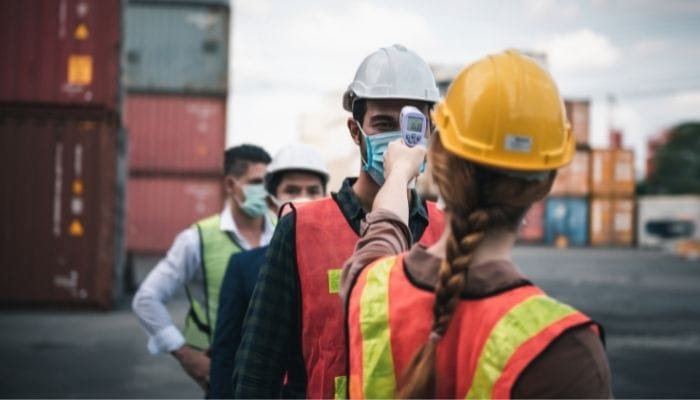Despite the vaccine helping so many people become more resistant to COVID-19, there are still plenty of risks. Many people remain unvaccinated, and there have been resurgences of COVID-19 cases. Construction workers are still at risk since they can’t do their work remotely. Here are some safety tips for construction workers during COVID-19.
Keep Utilities Sanitary
Now, more than ever, you should be incredibly diligent about keeping portable bathrooms, handwashing stations, and other hygienic utilities clean and maintained. This will be crucial for cutting back on the number of germs and contaminants spreading around the construction site despite everyone keeping their distance. Besides, you don’t want the things that should improve your construction site to cause problems. That’ll just mean you paid for extra problems. Make sure to clean these utilities and disinfect them regularly. Simply cleaning your facilities is a good start and will keep them looking nice. But you should also sanitize thoroughly to remove the germs and microbial threats present.
Equip Workers Properly
A good safety tip for construction workers during COVID-19 is to consider personal protective equipment and ensure it can guard workers against disease and physical harm. Obviously, masks have become commonplace since the pandemic started. But good pairs of heavy-duty work gloves will protect workers’ hands from injuries. They’ll also keep germs from getting on their hands and infecting them if they touch their faces. If employees work in close proximity, eye protection may also be a good idea because the eyes are also as vulnerable to infection as the mouth or nose.
Have Safe Work Practices
Administrative and managerial staff should do everything they can to enforce safe practices. For example, meetings should be as short as possible. This will limit the number of time workers spend in close contact with others. Before clocking in, workers should have their temperatures checked to ensure they aren’t showing any dangerous symptoms. Staggering work schedules can also limit how many people are on-site at any given time.








































